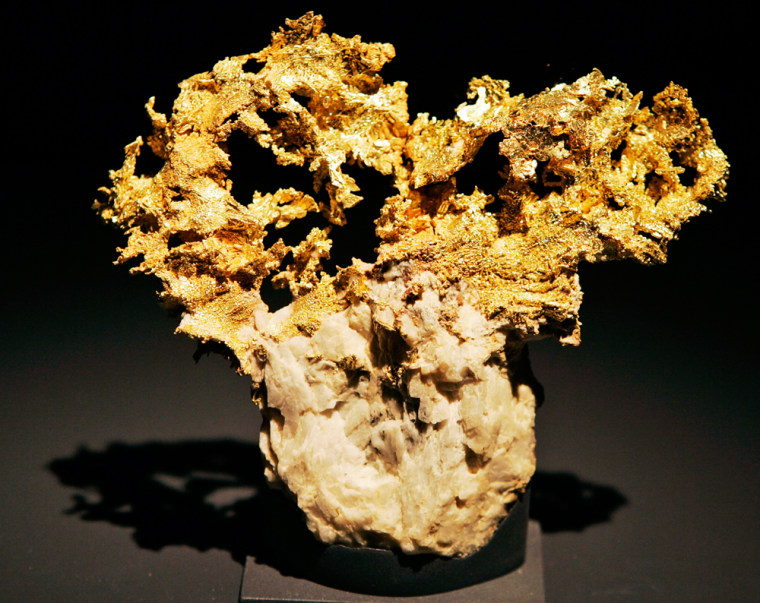The Old U.S. Mint in New Orleans is reopening to the public for the first time since Hurricane Katrina with an exhibit this weekend that could not be more fitting — "Gold."
The Old U.S. Mint made millions of silver and gold coins while in operation in the French Quarter between 1838 and 1909. The mint is now part of the Louisiana State Museum, which consists of a host of historic landmarks that house artifacts and collections of art.
The Old U.S. Mint was, in fact, among a second wave of mints to make American coins. The Philadelphia Mint opened in 1792, followed by branch mints in Charlotte, N.C., Dahlonega, Ga., and New Orleans, all opened in 1838.
The Old U.S. Mint in New Orleans was the only building in America to have served both as a U.S. and Confederate Mint. It was built in 1835 during the presidency of Andrew Jackson, who had advocated its establishment in order to help finance development of America's western frontier.
On Tuesday, curators worked diligently in the old building to prepare the hundreds of gold nuggets, coins, jewelry pieces and other objects that will be showcased beginning Saturday. The exhibit runs through Jan. 2.
Exhibit shines
Items on display for a media preview included an 1887 Mardi Gras Rex pin in the shape of a crown and a broach made in France in the late 19th Century of gold and woven human hair.
"There are some incredibly beautiful things in this collection, remarkable things," said Sue Fischer, a curator for the Louisiana State Museum working with a team from the American Museum of Natural History, which sent the exhibit to New Orleans.
After showing in New Orleans, the exhibit will move to Denver, followed by Chicago and Atlanta.
The exhibit includes dozens of natural gold specimens, including a 108-pound boulder containing more than 22 pounds of crystalline gold, more than 100 cultural objects and hundreds of gold bars and coins.

The exhibit also includes a gold treasure box recovered from a 1715 shipwreck off the coast of Florida, an 18-karat gold baby rattle and a few of the millions of coins minted at the Old U.S. Mint between 1838 and 1909.
The mint has been closed since Katrina ripped off large sections of the building's copper roof. It took more than two years and more than $5 million to repair the roof and rain damage and move the mint's jazz history collection — including a cornet played by Louis Armstrong — to a safe location.
The collection will eventually be moved back into the mint, said David Kahn, director of the Louisiana State Museum.
Celebrity loans
Some modern gold objects are on loan from celebrities. Among them: Harrison Ford's "Lifetime Achievement" Golden Globe from 2002, Tom Brokaw's Emmy for his 2004 news documentary "The Death and Funeral of Ronald Wilson Reagan" and Susan Sarandon's 1996 best actress Oscar for "Dead Man Walking."
Other modern gold objects in the exhibit include a Faberge egg with gold scrollwork, a vanity box made by Cartier for actress Mary Pickford, a necklace made of gold coins from the jeweler Bulgari and a brooch designed by Paloma Picasso for Tiffany & Co.
Minting began at the Old U.S. Mint in 1838. In 1861, when Louisiana seceded from the United States, state authorities seized the property and transferred it to the Confederate Army. For a short time it was used to mint Confederate currency and to house Confederate troops. This ended when New Orleans was occupied by federal forces.
Following the Civil War, during the period of Reconstruction, minting of U.S. coins resumed. Minting operations ceased in 1909 and, for the next 57 years, the Mint served a variety of official purposes. In 1966 the landmark was transferred to the state and in 1981 opened to the public as a State Museum site.
